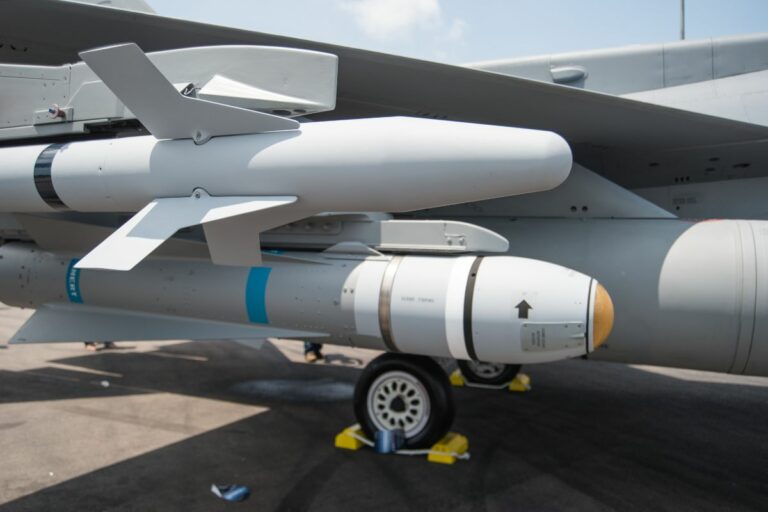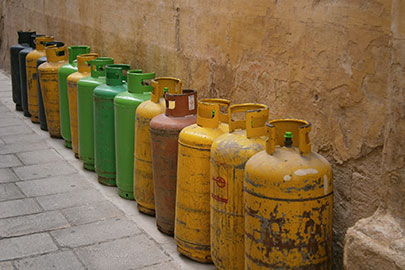What Are Joint and Fault? The Main Differences Explained
There are many different terms used in the field of geology, and it can be difficult to keep track of them all. In this blog post, we will discuss two of the most important terms: joint and fault. We will explain what each one is, and give the main differences between them.
As a whole, the main difference between a joint and a vault is their formation process. Joints are formed by stress that pulls apart rocks, while faults are created by movement and displacement of rocks. This can happen due to tectonic activity or changes in the environment.
Don’t worry, I will explain everything in detail in this article. I will start by explaining each term before explaining the key differences between them.
What is a joint in geology?
Definition
A joint is a break in rocks that does not show any displacement.
They are usually straight or curved, and can be found in all types of rocks. They can be either natural or man-made (induced by quarrying, mining, or even construction).
Types of joints
Joints are classified according to their shape, size, and orientation. The most common joint types are:
- Joints that run parallel to each other are called parallel joints.
- Joints that intersect each other at an angle are called intersecting joints.
- Joints that branch off from a main joint are called branching joints.
Appearance
Joints can be either visible or not visible on the surface of rocks. They are usually more evident in sedimentary rocks because the grains tend to break along the joints.

In igneous and metamorphic rocks, the joint surfaces are often weathered and smoothed out. This makes them more difficult to see.
Cause
Joints form due to a variety of reasons. The most common reason is that rocks contract as they cool. This contraction causes the rocks to fracture and creates joints.
Other causes of joints include unloading of pressure, and turning points in rivers.
Size
Joints can be from all sizes: from very small to extremely large. The largest joints in the world are called dikes and can be up to a kilometer in width. In the other hand, the smallest joints are microscopic.
Dikes are a subtype of joints that form when magma forces its way through cracks in rocks.
Movement
Joints can also be classified according to their movement. Joints are either:
- Non-moving: the joint surfaces don’t move relative to each other. An example of a non-moving joint is a cooling contraction joint.
- Moving: the joint surfaces do move relative to each other. An example of a moving joint is a fault.
Faults
Definition
A fault is a fracture in the earth’s crust along which movement has occurred. . Faults are usually caused by the stress that is exerted on the earth’s crust by the movement of tectonic plates.
Size
Faults can be small, like the cracks that form in your sidewalks when they freeze and then thaw, or they can be large enough to be clearly visible from space, like the San Andreas Fault in California.

Types of faults
Faults can be found all over the world, and they come in many different types. The three main types of faults are:
- Normal faults: these occur when the hanging wall (the side of the fault that appears to have moved up) moves down relative to the footwall (the side of the fault that appears to have moved down). Normal faults are common in areas where rocks are being pulled apart, like in rift zones.
- Reverse faults: these occur when the hanging wall moves up relative to the footwall. Reverse faults are common in areas where rocks are being pushed together, like at convergent plate boundaries.
- Strike-slip faults: these occur when two blocks of rock slide past each other horizontally. Strike-slip faults are common in areas where rocks are being deformed by horizontal stress, like at transform plate boundaries.
Movement
Faults can be either active, meaning that they are currently moving and likely to cause an earthquake, or inactive (also called “dormant”), meaning that they have not moved for a long time but could become active again
Faults are fractures in rock that show evidence of movement. Faults can be either normal, reverse, or strike-slip depending on the direction of movement. Faults form when the rock is ductile and deform under stress. Faults are common in all types of rocks and can be found in both sedimentary and igneous rocks.
How geologists use fault to understand history?
Geologists use faults to help them understand the tectonic history of an area. Faults can also be used to correlate strata between different outcrops. By understanding how faults form, geologists can better understand the processes that occur during earthquakes.
Main differences between a joint and a fault
The main difference between joints and faults is that joints are fractures where no movement has occurred, while faults are fractures where movement has occurred. However, both types of fractures can become active again and restart moving.
To sum up, there are 3 keys differences to keep in mind to differentiate joints and faults:
- Joints are fractures where no movement has occurred, while faults are fractures where movement has occurred.
- Joints form when rocks are pulled apart by tectonic forces, while faults form when rocks are pushed together by tectonic forces.
- Joints can be found at all scales, from microscopic to continental, while faults are typically found at the scale of mountains or plates.
| Joint | Fault | |
|---|---|---|
| Movement | No movement has occurred | Movement has occurred |
| Type of movement | Rocks are pushed apart | Rocks are pushed together |
| Size | Any, from microscopic to continental | Generally bigger, like entire mountains |
Examples of joint and fault:
- Joint: A common example of a joint is the cracks that form in concrete as it dries. These cracks are called contraction joints and are created to relieve stress in the concrete as it shrinks.

- Fault: The San Andreas fault is an example of a fault where two plates are pushing against each other, causing the rocks to break and move.
Video
This video is a bit old and not very good-looking, but explain very well the different types of movement and their effects on the landscape. It’s visual, and you’ll get it if it’s not yet clear enough:
Related questions
Is a joint a type of fault?
No, a joint is not a type of fault. Joints are cracks that form in rocks without any movement, while faults are cracks with movement.
What’s the difference with a fracture?
Both joints and faults are types of fractures. Fractures are any breaks in rocks, whether or not there is movement.
What is the difference between a joint and a fault scarp?
A joint is a crack that forms in rocks without any movement, while a fault scarp is a cliff created by the movement of rocks along a fault line.
That’s it! You now know everything about faults and joints.
So, next time you’re out on a hike and come across a fracture in the rock, think about whether it’s a joint or fault! And if you can’t tell, don’t worry – even geologists have a hard time sometimes.






